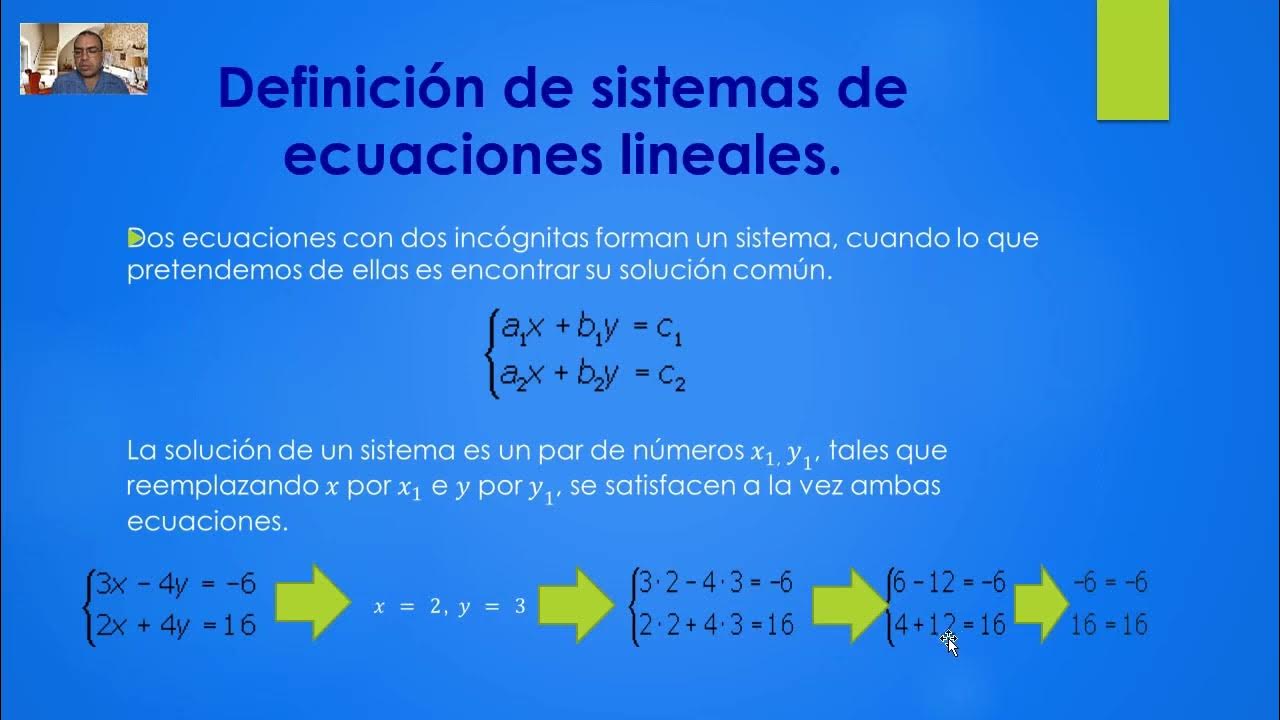Penyelesaian Persamaan Simultan dengan TSLS Oleh Dr. Agus Tri basuki
Summary
TLDRThe video discusses the solution to simultaneous equations using touchscreen or DSLR technology. It introduces simultaneous equations, explaining the relationship between dependent and independent variables in economic models. The script details the steps to solve these equations through the Two-Stage Least Squares (TSLS) method, explaining the identification test and how to apply the method using software tools. The video also covers key assumptions, results analysis, and the interpretation of the model, providing a practical approach to solving simultaneous equations in economics.
Takeaways
- 😀 The script explains how to solve simultaneous equations in econometrics using the Two-Stage Least Squares (TSLS) method.
- 😀 Simultaneous equations involve multiple interdependent equations, each with dependent and independent variables.
- 😀 Endogenous variables (like investment) are influenced by other variables, while exogenous variables (like trade and interest rates) are not.
- 😀 The objective is to use TSLS to estimate the relationships between variables in an economic model.
- 😀 The process involves identifying the appropriate instruments (e.g., trade revenue, exchange rates) for the TSLS method.
- 😀 Over-identification occurs when there are more instruments than equations; TSLS helps resolve this issue.
- 😀 TSLS is validated by checking for assumptions like normality, no autocorrelation, and homoscedasticity using statistical tests.
- 😀 The script emphasizes the importance of verifying the validity of the instruments and ensuring that all assumptions are met for accurate results.
- 😀 After applying TSLS, the results show significant relationships between investment and other economic factors, such as exchange rates and trade revenue.
- 😀 The analysis concludes that the model is statistically sound and can be used for economic decision-making and further analysis.
Q & A
What is the main topic discussed in the script?
-The script discusses how to solve simultaneous equations using a touchscreen or DSLR, with an emphasis on economic modeling and the application of Two-Stage Least Squares (TSLS) for simultaneous equations.
What are simultaneous equations and why are they important in this context?
-Simultaneous equations are sets of equations with multiple variables that are solved together. In this context, they represent relationships between economic phenomena and are crucial for analyzing how different variables influence each other.
What are endogen and exogen variables in the simultaneous equations discussed?
-Endogen variables are those whose values are determined within the system of equations, while exogen variables are independent and determined outside the system, influencing the endogen variables.
How does the script suggest identifying and solving simultaneous equations?
-The script explains using methods like the TSLS (Two-Stage Least Squares) for identifying and solving simultaneous equations, especially when there are more than one dependent variable and complex interdependencies.
What is the importance of the TSLS method in solving simultaneous equations?
-The TSLS method is used to address potential problems in simultaneous equations, such as endogeneity, where an independent variable in one equation is influenced by another equation's dependent variable.
What role does the 'reduce-form' play in the analysis of the system of equations?
-The 'reduce-form' refers to expressing one of the dependent variables in terms of the exogen variables. This allows the model to be simplified for further analysis and to identify relationships between variables more clearly.
What are the key steps involved in applying the TSLS method in this context?
-Key steps include identifying the exogen variables, formulating the reduced-form equations, and using tools like EViews software to estimate and test the equations for validity through various assumptions like normality, autocorrelation, and heteroscedasticity.
What does it mean for an equation to be 'over-identified'?
-An equation is 'over-identified' when there are more instruments (exogen variables) than necessary, which allows for more reliable estimates by providing extra information that can be used to solve the equations.
How does the script handle potential issues like autocorrelation and heteroscedasticity?
-The script uses diagnostic tests like the Breusch-Pagan Godfrey test for heteroscedasticity and checks for normality of residuals and autocorrelation, ensuring that the model meets the assumptions necessary for valid estimation.
What does the script conclude about the significance of various variables in the economic model?
-The script concludes that most of the variables, except for some like the industrial value-added variable, are significant in explaining the investment and economic phenomena modeled, and the TSLS method successfully handles issues like endogeneity and heteroscedasticity.
Outlines

This section is available to paid users only. Please upgrade to access this part.
Upgrade NowMindmap

This section is available to paid users only. Please upgrade to access this part.
Upgrade NowKeywords

This section is available to paid users only. Please upgrade to access this part.
Upgrade NowHighlights

This section is available to paid users only. Please upgrade to access this part.
Upgrade NowTranscripts

This section is available to paid users only. Please upgrade to access this part.
Upgrade NowBrowse More Related Video

276e

Joining two functions so that their gradients match: Part 1 (Maths Methods PSMT IA1 prep)

[PART 11] Matematik Tingkatan 5 BAB 2 KSSM | Matriks | kaedah matriks persamaan linear serentak

Video 3.1. Sistemas de ecuaciones lineales, definición y clasificación

METODE NUMERIK P2 | METODE GAUSS UNTUK MENYELESAIKAN SPL

Why a sausage can do what your gloves cannot - Charles Wallace and Sajan Saini
5.0 / 5 (0 votes)